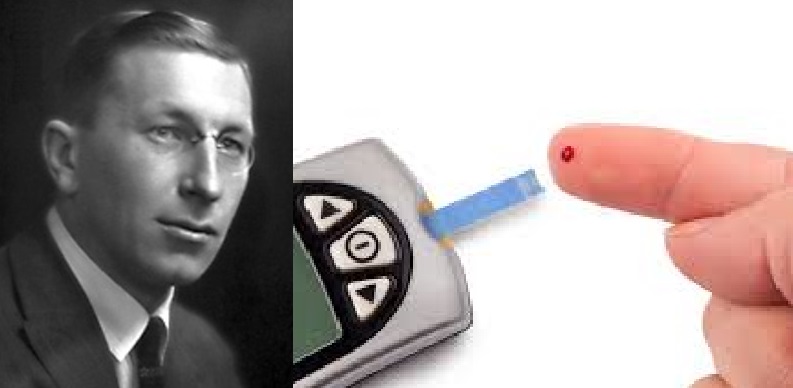When Canadian Doctor Frederick Banting discovered insulin, he turned down offers from big corporations that would have made him – and them — rich, by making insulin available only to those who could afford it. Instead, Banting said that insulin was his gift to mankind.
Diabetes began to be recognized as a top killer of humans in the early 20th century. A few months was the usual expectation for those diagnosed with the disease.
Many scientists devoted themselves to the search for the cure, but none were able to find anything other than improved diets to prolong life expectancy.
A military surgeon serving in WWI, a war that had diverted funds away from most medical research for years, Frederick Banting followed up on a research paper he read that hypothesized that diabetes was caused by a single substance in the pancreas. The author of the paper, Englishman Sir Edward Albert Sharpey-Schafer, dubbed the hormone “insulin.”
Because digestion destroyed insulin, Banting set out to find a way to extract the substance from the healthy pancreases.
Banting worked on his task at his alma mater Toronto University with Dr. J.J.R. Macleod, who believed the experiment Banting wanted to use had an almost 100% chance of failure, so Banting performed the operation while Scotsman Macloed was overseas playing golf.
Banting and his team dispensed with many of previous ideas about how to search for the cure, and went to the slaughter-house and obtained beef and pig pancreases to test. It worked well, but was extremely inconsistent. The team struggled to achieve a solution that would be both pure and nontoxic to humans.
A teenager on his deathbed was given the first human trial of the insulin treatment, which failed and caused an allergic reaction. Biochemist James B. Collip went back to work on the solution. A second dose was administered to the same youth with success, and his health thrived.
However, the medicine could not save the large number of dying diabetics because the challenge of mass production of pure insulin had not yet been met.
At this point, large pharmaceutical companies offered the Banting huge sums of money for the patent to insulin. They proposed an insulin clinic with Banting in charge, and would make the medicine available to all who could pay for it. Banting, however, said that insulin was his gift to mankind, and it would be available to everyone who needed it rather than a commodity for anyone’s profit.
However, mass production was necessary and the process of introducing human insulin production genes into bacteria, then collecting and purifying the product of the bacteria is not a simple task. There would be an inherent production cost to the treatment for diabetes.
The Canadian group teamed with a large American drug company which could provide funding, facilities and supplies, and Lily was soon distributing the drug around North America and saving thousands of lives. Life expectancy for diabetics rose from weeks to tens of years.
The work earned the team the Nobel Prize in 1923. Banting was also knighted, and Canada later honored the scientist by printing his portrait on the $100 bill.
By Andy Scott
